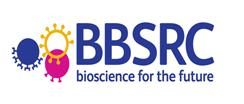- View more resources from this publisher
 Biotechnology and Biological Sciences Research Council (BBSRC) - UKRI
Biotechnology and Biological Sciences Research Council (BBSRC) - UKRI
Ethics, Morality and Animal Biotechnology
Written in 1999, and published by the Biotechnology and Biological Sciences Research Council (BBSRC), this book looks at issues surrounding the ethical use of animals in the field of biotechnology.
The chapters in the book cover:
Current developments in animal biotechnology
* Why are genetically modified animals produced ?
* Why are animals used instead of genetically modified microbes or plants?
* UK Regulations
Moral and ethical concerns
* How can moral and ethical concerns be evaluated?
* Why do moral and ethical concerns matter ?
Animal ethics
* Animal welfare and the moral community
* Sentiency
* Speciesism
* The extent of the animal kingdom
Intrinsic concerns about animal biotechnology
* Religious concerns
* Problems with Nature and naturalness
* Problems with animals
Extrinsic concerns about animal biotechnology
* Is animal biotechnology risky?
* Animal welfare
This book is suitable for teachers, as background information, for post-16 students, to supplement curriculum materials, and excerpts could be used with more able 14-16 year old students. It complements 'Ethics, Morality and Crop Biotechnology' written by Dr Roger Straughan and the Revd Dr Michael Reiss, and published by BBSRC in 1996.
Show health and safety information
Please be aware that resources have been published on the website in the form that they were originally supplied. This means that procedures reflect general practice and standards applicable at the time resources were produced and cannot be assumed to be acceptable today. Website users are fully responsible for ensuring that any activity, including practical work, which they carry out is in accordance with current regulations related to health and safety and that an appropriate risk assessment has been carried out.




